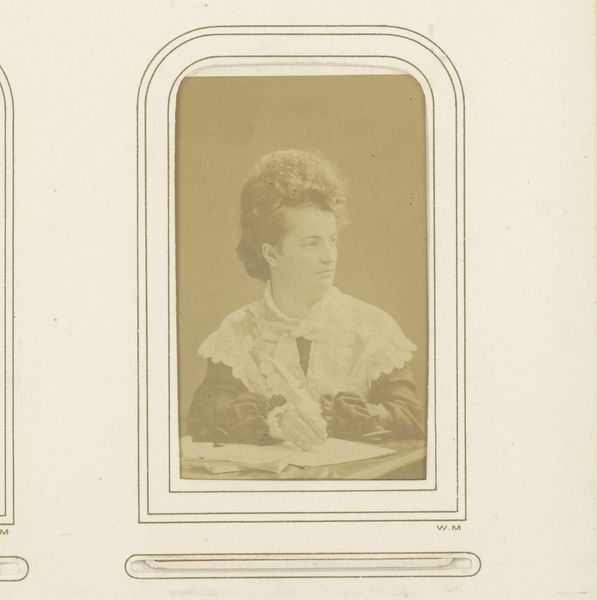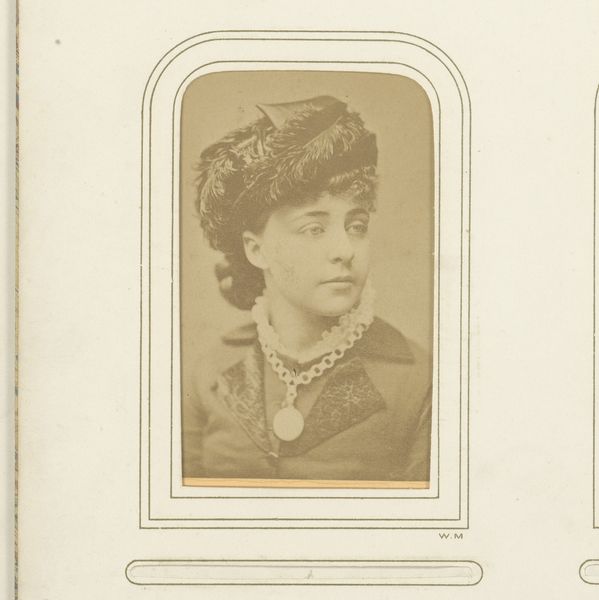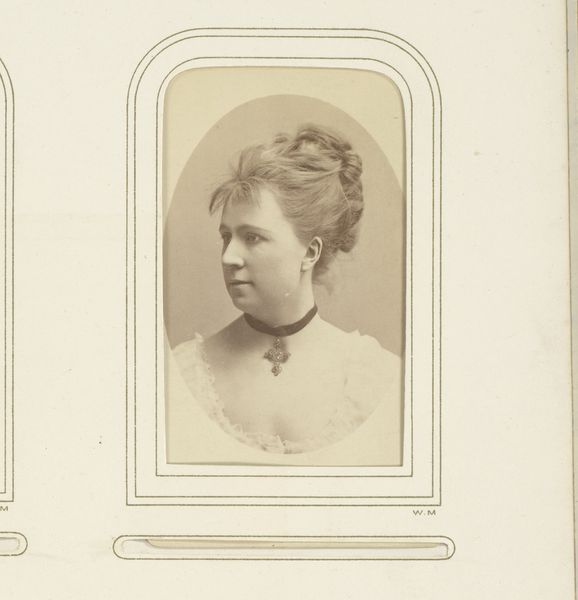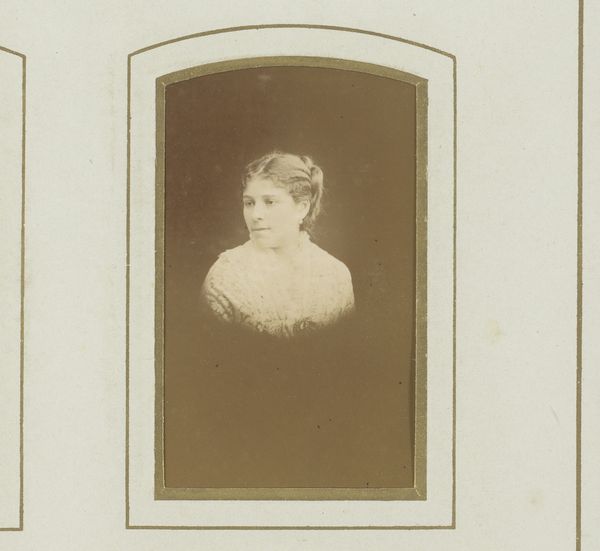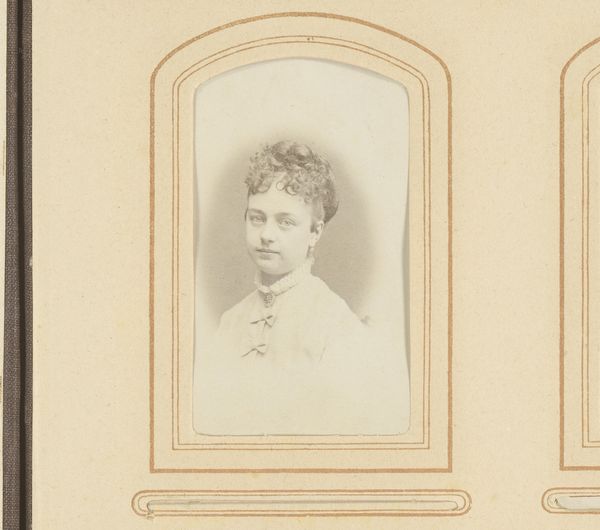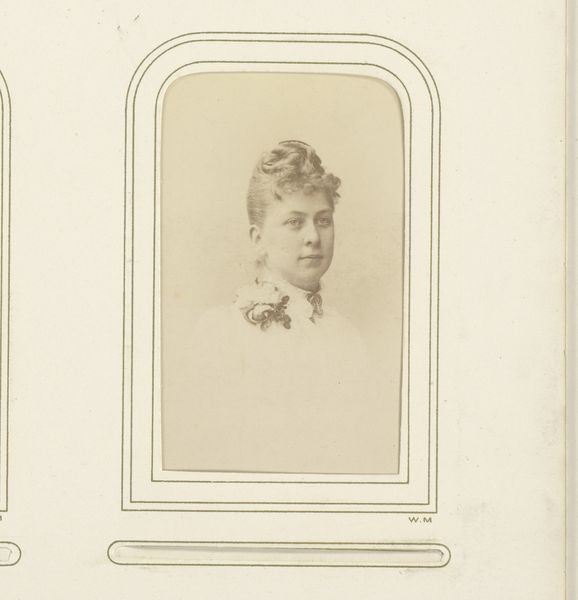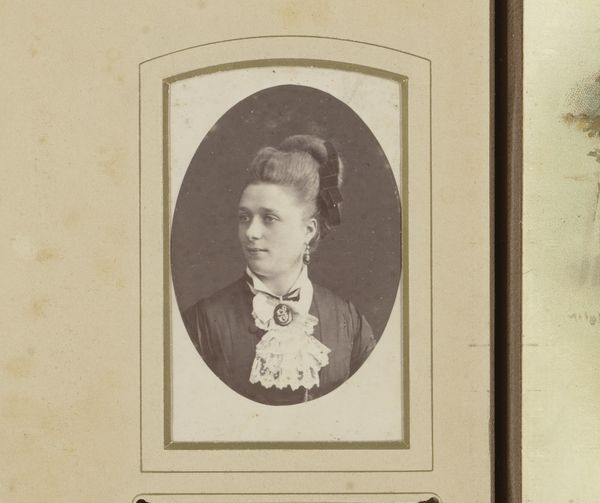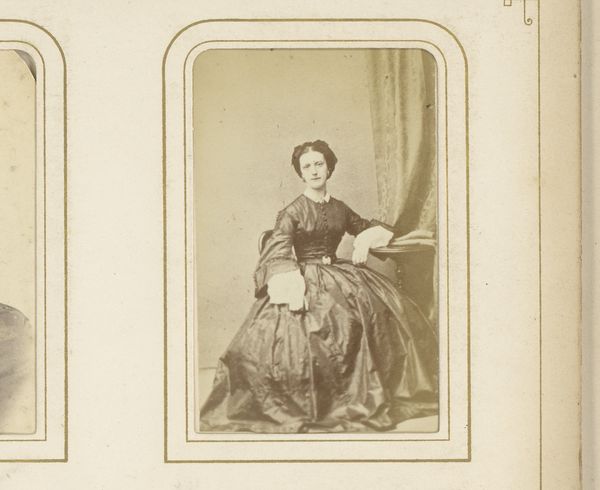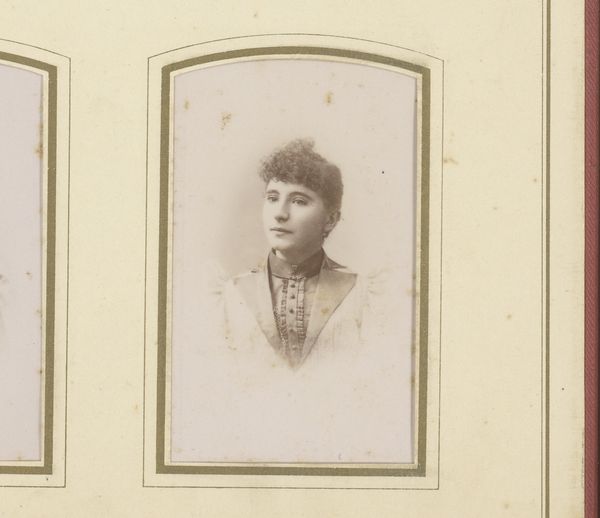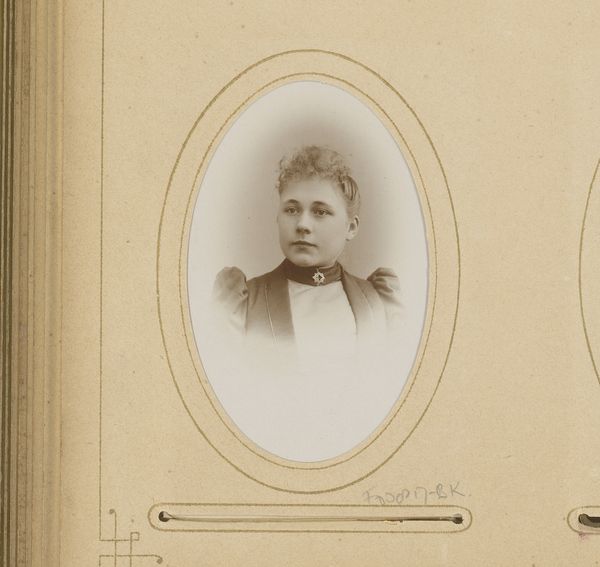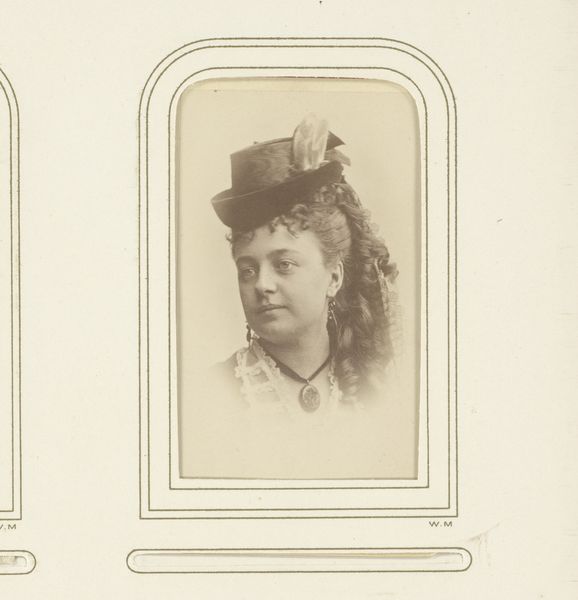
photography, gelatin-silver-print
#
portrait
#
16_19th-century
#
figuration
#
photography
#
historical photography
#
gelatin-silver-print
#
19th century
Dimensions: height 85 mm, width 51 mm
Copyright: Rijks Museum: Open Domain
Editor: Here we have Gösta Florman’s “Portrait of Betty Almlöf,” a gelatin silver print created sometime between 1855 and 1870. It's such an interesting glimpse into the past. I’m struck by how staged and formal it feels, almost like a painting. What do you see in this piece? Curator: For me, portraits like this are powerful reminders of how identity was carefully constructed and presented in the 19th century. Consider the societal pressures on women of that era – the expectations around domesticity, appearance, and even the repression of female sexuality. Her gaze is averted, which may suggest compliance or demureness, but it could also signal quiet resistance to being scrutinized, given the very male dominated photographic profession at the time. What do you think about that? Editor: I didn't think of it like that. It’s easy to just see a pretty picture, but framing it in terms of the power dynamics really shifts the meaning. The ruffled dress, the careful pose, everything becomes part of that constructed identity. Curator: Exactly. The portrait becomes a site where those societal expectations are both performed and potentially challenged. Photography was relatively new then, offering possibilities for self-representation but also reinforcing certain norms. It also gives us clues to the identity of this specific person: How did someone from the emerging Swedish bourgeois define themselves? These material cues give us invaluable glimpses. Editor: So, it's not just a photograph of a woman named Betty, but a complex statement about her place in society? Curator: Precisely. It prompts us to consider how individuals navigated, and perhaps even subverted, those roles through the very act of having their portrait taken. This wasn't a neutral process but an active negotiation. Editor: That’s fascinating. I’ll definitely look at these historical photographs differently now, considering the push and pull of societal expectations and personal expression. Curator: And it’s important to keep asking who wasn’t in front of the camera. Whose stories were not considered worth telling at the time.
Comments
No comments
Be the first to comment and join the conversation on the ultimate creative platform.
